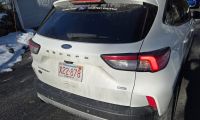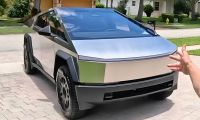The National Transportation Safety Board has issued a preliminary report on the Tesla Model X P100D crash that killed its occupant on March 23rd on a highway in California. The report has detailed information on the pre-crash events. Part of the information retrieved from the Tesla data logged by the vehicle shows that the Tesla accelerated just prior to the impact to speeds above the posted speed limit and that the car seems to have steered itself directly into the barrier.
Included in the report is the statement "At 3 seconds prior to the crash and up to the time of impact with the crash attenuator,the Tesla’s speed increased from 62 to 70.8 mph, with no precrash braking or evasive steering movement detected." The speed limit on that roadway is 65 MPH. The report also says that the Autopilot system was set by the driver to 10 MPH higher than the speed limit. Prior to the car accelerating, it had been following another car (using adaptive cruise control) and thus, was traveling slower than the setpoint of the Autopilot.
Lane-keeping assist was engaged leading up to the moment of the crash. The Model X had been following another vehicle that did not crash, but steered itself out of the lane and into the barrier.
Although the car was engulfed in flames when the vehicle's lithium batteries caught fire, the driver was pulled free by bystanders who found him in his seat with seatbelt on. The fire department required hundreds of gallons of fire foam and ten minutes to extinguish the flames.
Five days after the crash, the battery re-ignited.
As we have previously reported, an NTSB report on an earlier crash of Tesla Model S using Autopilot seemed to eerily predict more crashes. According to that report, "The way in which the Tesla “Autopilot” system monitored and responded to the driver’s interaction with the steering wheel was not an effective method of ensuring driver engagement." In this crash, the report says the data indicate, "During the 60 seconds prior to the crash, the driver’s hands were detected on the steering wheel on three separate occasions, for a total of 34 seconds; for the last 6 seconds prior to the crash, the vehicle did not detect the driver’s hands on the steering wheel."
Related Story: Video Emerges from Highway 101 Tesla Model X Crash











